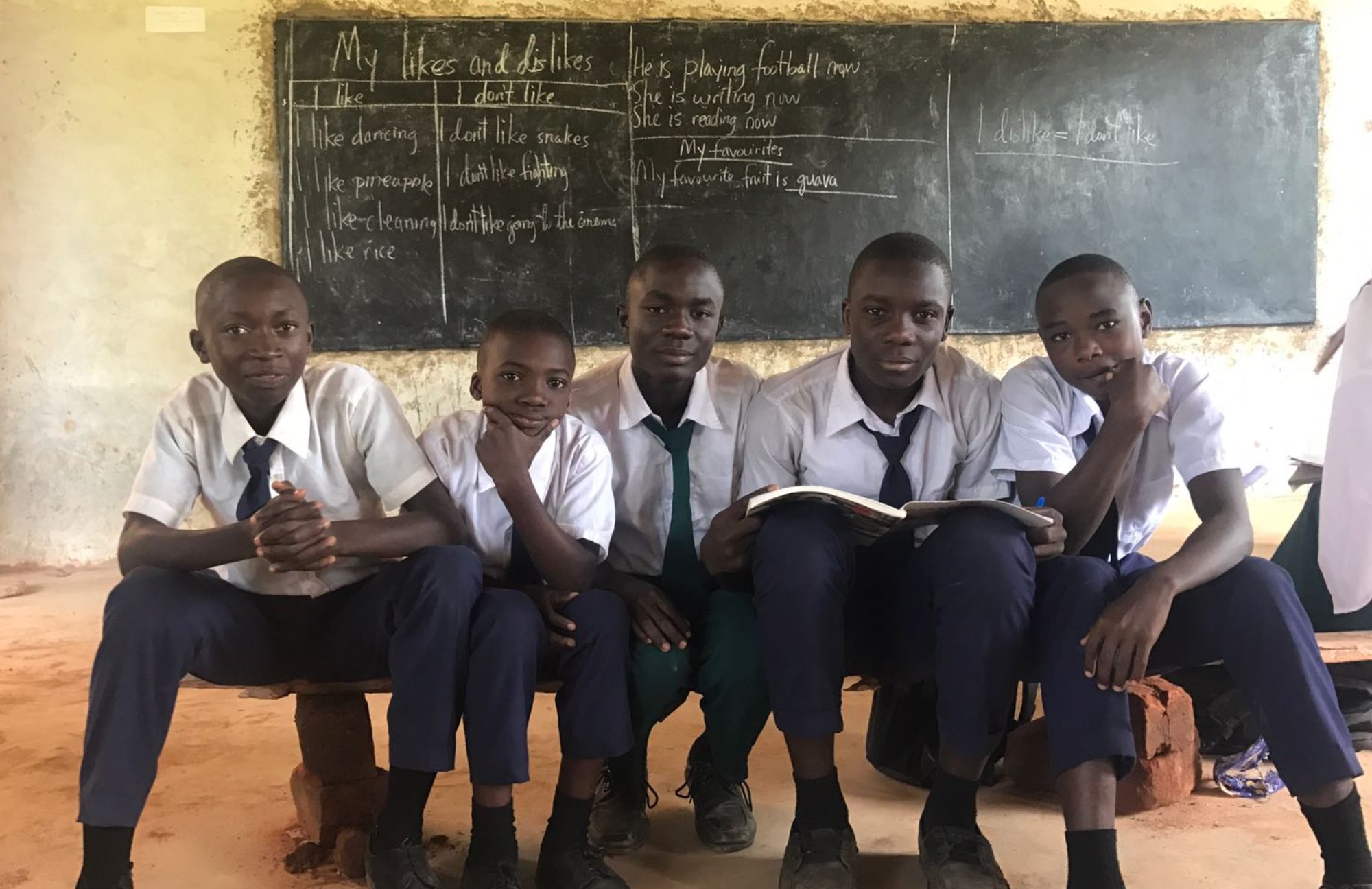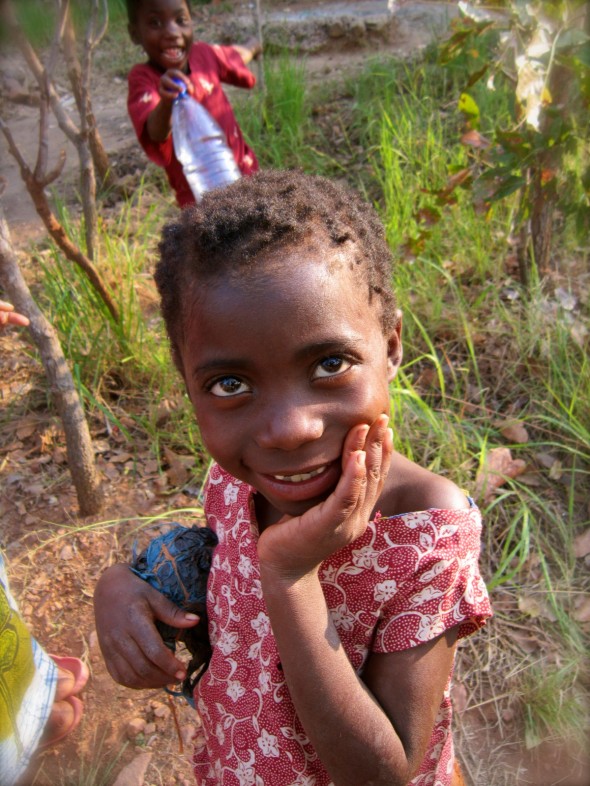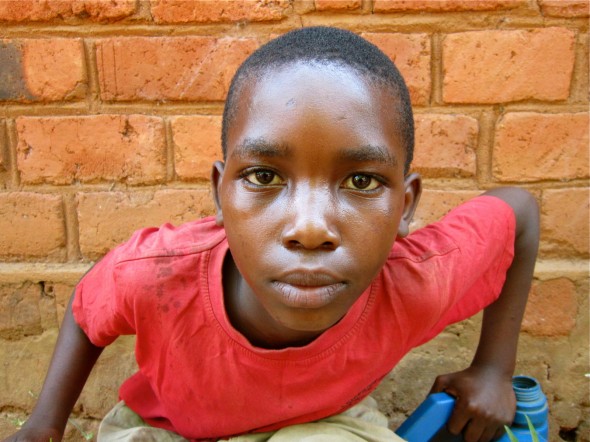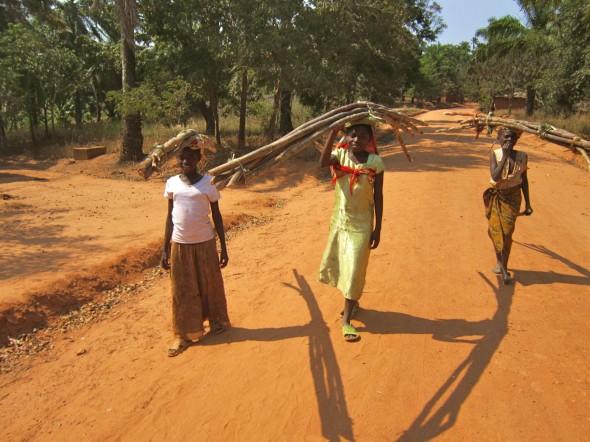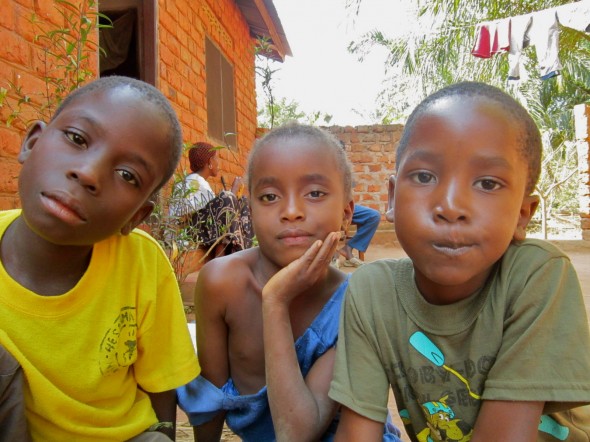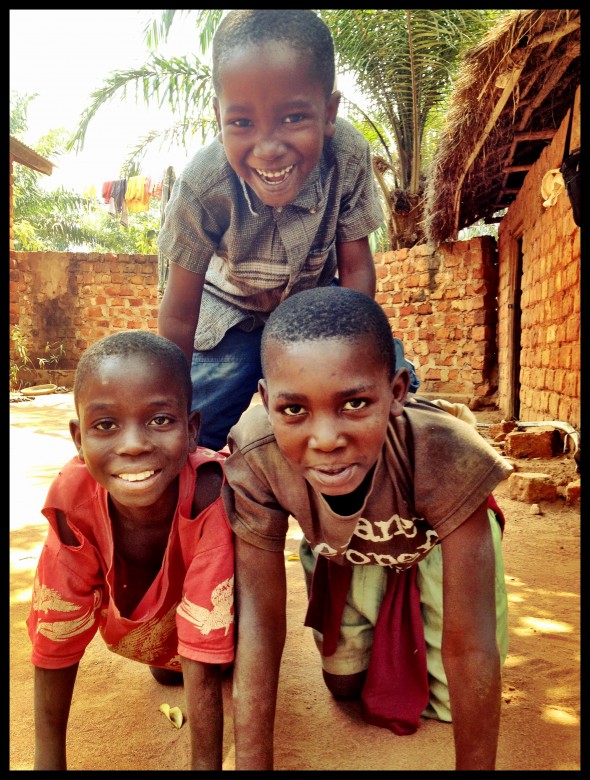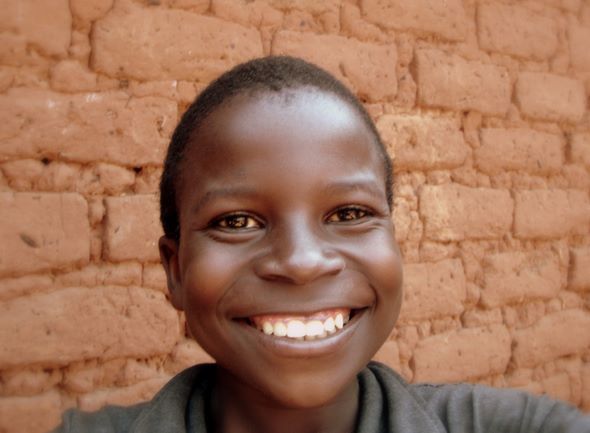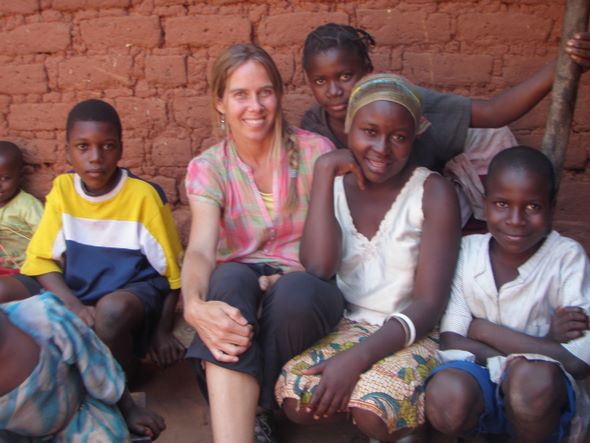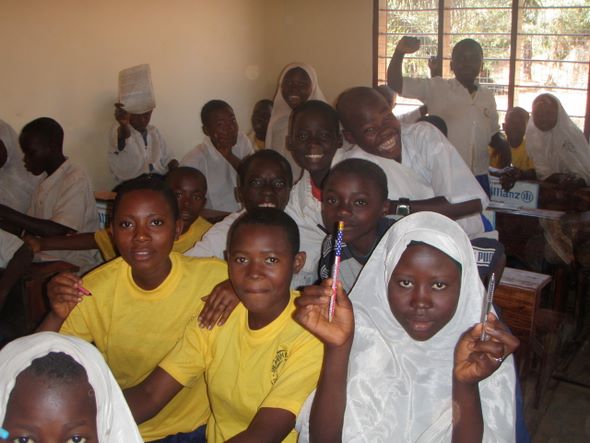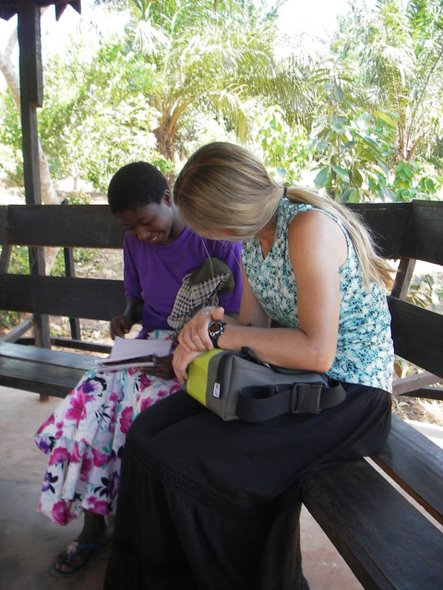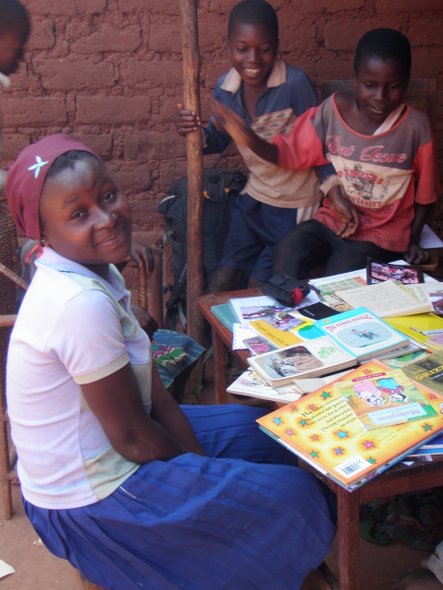Twice a year, Lucas makes his rounds to the various schools where our scholarship students attend. He checks in with the headmasters and teachers, he gets updates on our students, and he collects report cards. Like a proud but nervous baba and mama, Lucas and I wait in anticipation as the grades roll in. Well, Lucas has more of a wait as he has to sit there as the headmaster or secondmaster meticulously copies from the grade books into a report for Lucas. Subject by Subject, score by score, letter grade by letter grade, and then finally the average. (I just have to open the email and see all of Lucas’ scans.)
I’m not going to sugar coat it. Getting good grades in remote village schools is a challenge. You can view a chat on the topic with our students Hindu and Saidi here:
Here’s a quick refresher on the realities:
- Secondary School teachers in Tanzania don’t generally want to be sent to the village schools. They are often trained in cities and large towns and hope to get an appointment there. For those who want to work in the village, they have a sense of committment to the children and communities. For those who would rather be back in the cities, it’s a struggle to show up every day with the energy and motivation to teach well. Why? (see #2)
- Children in village schools are already at a slight disadvantage. Primary school teachers only have to complete secondary school, but are not required to pursue any further teacher education. Therefore, they are often underprepared to manage and promote learning well. Not to mention, one village classroom can have up to 100 students! (continued in #3)
- Secondary school subjects in Tanzania are taught in English. Primary school is taught in Swahili. (Need I say more? I will.) Teachers sometimes don’t speak English very well, but they teach subjects in English. Students barely speak English when they reach secondarly school, and now they are learning all their subjects (e.g., math, history, physics, biology) in English. This has been well documented as ineffective in my field (Applied Linguistics) but, it’s a byproduct of colonialism, so we just have to wait it out. Soon, the GOV will hopefully embrace dual immersion in primary or bilingual approaches in secondary (still requires English proficiency in teachers).
- Students don’t have books. Most village schools have one book – for the teacher. The students have no books. There is no electricity, therefore no copy machines (therefore nothing to take home and study besides what is copied into one’s notebook).
- Families in villages have a lot on their plate – from supporting large families through subsistence farming and fishing to managing health issues with limited infrastructure. The women rely on the children in many ways – they help mind siblings, carry water, tend animals, prepare meals, clean, etc. So, school can, at times, take a backseat to the rest of life.
Does it seem like I’m preparing you for the worst? Well, in part – I am, but not completely.
Some of our students are not getting very good grades in their subjects. When they are selected to the scholarship program, we have them sign an agreement that states that they will maintain a certain grade average and if they fall below that average, they will receive tutoring for 4 months. If their grades don’t come up, they will unfortunately lose support.
Can Lucas and I cut anyone from our program? No. Does that make us bad ‘business people’? Maybe. But, I know that even when our students get an F or a D in their courses, it’s not because they don’t want an education. It’s not because they hate to study or go to school. Most of them wake at 6am and walk for up to (and sometimes over) an hour each way without breakfast or lunch. (I love that last part because it sounds like a ‘fly-in-the-eye’ campaign – i.e., an exaggeration to tug at heart strings. It’s just reality. I do the walk with them when I visit, and their capacity to storytell and sing the whole way there and back blows me away! I’m usually the one complaining about the heat, dust, distance.) They are failing and flailing due to no fault of their own. The system – it’s all about the system, no matter where in the world you look. So, until the system changes (and beyond) – we’ll stand by them.
But, the good news is – we have some shining SUPERSTARS in the group who show us the potential of a bright young child when given the right balance of support (i.e., financial, emotional, physical and familial) and determination.
So here are the highlights!! (i.e., the Good News) (Note on Curving the Grade Scale: American A = TZ village B; American B = village C; students are praised for receiving Cs and Ds)
Girls
Amina, one of our first year Form 1 students really blew me away! She scored a B in Civics, Geography, Physics, Chemistry, and Biology!! There’s no stopping her if she can keep this up! Bravo, Amina!
Rahma, another new Form 1 student, earned an A in English, B in French, and a C in History, Geography, Chemistry and Physics. She has quite the range of strengths!
Khadija was one of our first ever scholarship students. She graduated from secondary school and now studies at the Vocational Training and Education Authority. She is doing exceptionally well and has secured a B average and a rank of 3rd in her class. Her favorite subjects appear to be French and Computer Applications.
Boys
Tumsifu is one of our Form 4 students. His overall, cumulative grade average is B!! That is amazing, folks. His top subjects are Civics, History, Biology and Geography.
Simoni, a new Form 1 student, was sure to be a rockstar. Our intern Katy knew that about him the first time she taught as a guest in his class. Sure enough, quiet little Simoni secured an A in Civics, Chemistry, Biology and Swahili with a B in History and English. He has an overall B average!
Samiru, one of our new Form 1 students, had a very successful first year. He earned a B in Geography and a C in Physics, Chemistry and Math!!
George had an amazing first year with an A in Biology and English and a B in History, Geography, Swahili, Math, French and Chemistry! Way to go!!
Mussa, another new Form 1 student, rounded out his first year with a B in the following: Physics, Biology, and Chemistry!! Wow! Go, Mussa!!
Mahamudu also joins his Form 1 peers with a strong start, earning a B in Physics and Chemistry. (I’ll have to praise these STEM field teachers when I see them this summer!)
Ezekial, another Form 1 student, earned a B in History, English and Biology.
Albert held strong during his Form 1 year with a B in Civics and a C in Geography, Swahili, Biology and Physics!
And last but never ever the least, my best buddy since 2008 – Saidi!! Saidi moved from the village school in Kiganza last year to live with Lucas and attend a private school in town. His father wanted our support in that decision because the village school wasn’t keeping up with Saidi.
Saidi, as a Form 3 student, has earned an A in Math, Physics, Commerce, Swahili, and Beekeeping! He has a B in Civics, English, History, Geography, Chemistry, and Biology!! He is ranked 2nd in his class – in a big private town school! Remarkable!!
Wow – what an update! I wish I had more high grades to report, but you know – we’re really just proud of all of our students for continuing to get up every day and go to class. In fact, after recieving the reports, I emailed Lucas to find out why some of them were not doing so well. He went to their schools, met their teachers and conducted interviews. The findings: they wanted to be there, their attendance was good, their family support was in place, and they were having no problems at home. I can’t point a finger at the exact problem, but many factors are at play – student motivation and desire are NOT two of them. So, keep it up, kids!
Thank you so much to all of you for helping us keep them in school, in pursuit of their dreams. We’re in this for the long haul. You’ll know how they’re doing now and and down the road.
For now, there are three things you can do to help us:
- Spread the word. Please share our website and Facebook page through your social media networks. Bring us up in conversation and let people know why this cause, among the many you could support, matters to you.
- Build a Fundraiser. GlobalGiving makes it very easy to build your own fundraiser. Go to our project page, scroll down to just beneath the big Donate button; click on the little green fundraiser button and voilà! You can build a page for a wedding, holiday, sporting event, etc. You can personalize it and tell your friends why you want to help.
- Donate. Of course, at the end of the day – Lucas and I are Project Wezesha and we just have to keep making the ‘ask’. If you have a little to spare, feel free to share. It goes a long way – literally and figuratively – to complete the amazing start to what you see in these pictures!
